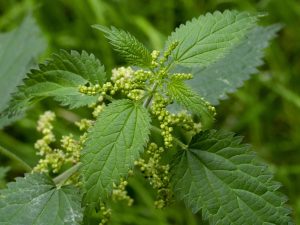What is Stinging Nettle?
Stinging nettle, scientifically known as “urtica dioica,” from the Latin word “uro,” which means “to burn,” is a perennial plant recognized for its painful sting caused by tiny hairs on its leaves and stems. It has a long history of use in traditional medicine for various ailments, including inflammation and urinary issues.
Stinging nettle is a nutritious plant popular in Western herbal medicine. It may reduce inflammation, hay fever symptoms, blood pressure and blood sugar levels — among other benefits. It has been a staple in herbal medicine since ancient times. Ancient Egyptians used stinging nettle to treat arthritis and lower back pain, while Roman troops rubbed it on themselves to help stay warm.
The leaves have hair-like structures that sting and also produce itching, redness and swelling.
However, once it is processed into a supplement, dried, freeze-dried or cooked, stinging nettle can be safely consumed. Studies link it to a number of potential health benefits.

Stinging nettle’s leaves and root provide a wide variety of nutrients, including:
- Vitamins: Vitamins A, C and K, as well as several B vitamins
- Minerals: Calcium, iron, magnesium, phosphorus, potassium and sodium
- Fats: Linoleic acid,
linolenic acid, palmitic acid, stearic acid and oleic acid - Amino acids: All of the essential amino acids
- Polyphenols: Kaempferol, quercetin, caffeic acid, coumarins and other flavonoids
- Pigments: Beta-carotene, lutein, luteoxanthin and other carotenoids
 How to Eat Stinging Nettle
How to Eat Stinging Nettle
The numerous seed pods that are produced can be harvested, dried and ground into a powder that can then be used in making many different baked goods. Powder can be used as a thickener for gravies, soups, stews, etc.
Stinging nettle can also be blanched and frozen or dried for future use in your favourite recipes. Make sure you have lots on hand to get you through those long winter months until the new shoots start to grow again in the spring.
